Haft Tepe
Q1266141Haft Tepe: site of a Bronze Age town in Elam.

Haft Tepe ("seven hills" - in fact twelve) in modern Khuzestan (ancient Elam) is probably identical to an ancient town named Tikni. The site is halfway Susa and Choga Zanbil and dates back to the fifteenth century BCE. Three parts have been identified: a temple with the royal tomb, the palace area, and the artisans' quarter. Many identifications are uncertain, which is expressed in the nomenclature: for example, the area known as "temple area" by some archaeologists, is called the "tomb area" by others.
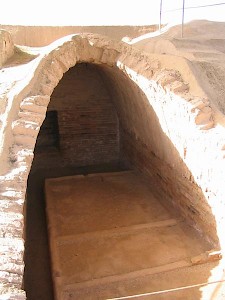
Whatever the name, this part of the site is a double tomb, on top of which was another structure with a large hall. It may indeed be a temple. In the eastern tomb, which measured about 10¼x3¼ meter, was a large platform that covered about three quarters of the floor; the remainder was a channel. The platform contained the skeletons of twenty-one people, packed in ritual red ochre. At the end of the room was a doorway that lead to the hall above it. This is one of the oldest Elamite examples of a vaulted room, at least two hundred years older than similar constructions at Choga Zanbil.
The other chamber contained twenty-three skeletons. There were burials elsewehere on the site, sometimes in urns, sometimes in sarcophagi,
These tombs date back to the period between 1500 and 1250, which saw a divided and weak Elam. Local potentates like Tepti-ahar were able to build up small states. Haft Tepe was one of these, and it was only after the rise of Susa, expressed in the building of Choga Zanbil after 1250, that Haft Tepe lost its independence.
To the southeast of the Royal Tomb was what is now called the "palace area", which is dominated by a large, very irregular structure that appears to have been a ziggurat. Archaeologists were able to establish that it rose to a height of 30 meters. East of this temple tower was the artisans' quarter. In this area, several cuneiform texts, written in Babylonian, were discovered in 2004. They were not the first tablets to be found here: about four thousand were already known, including treaties and school exercises. On top of this was a cemetery from the Sasanian age.
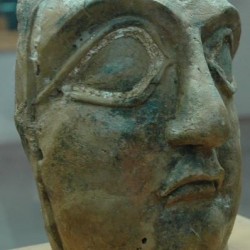 Haft Tepe, Royal tombs, Mask |
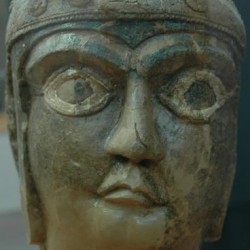 Haft Tepe, Royal tombs, Mask |
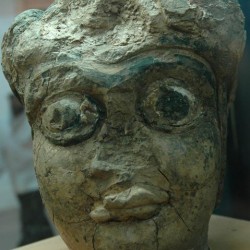 Haft Tepe, Royal tombs, Mask |
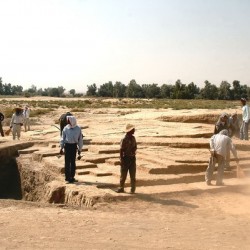 Haft Tepe, Excavations |
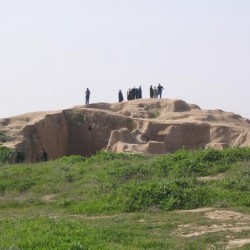 Haft Tepe, Ziggurat? |
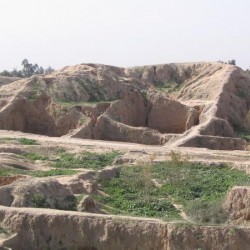 Haft Tepe, Palace Ruins? |
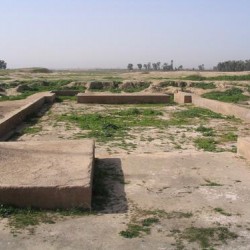 Haft Tepe, Great Hall |
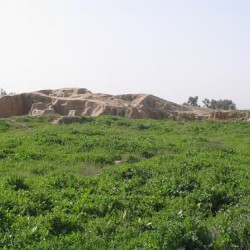 Haft Tepe, Ziggurat? |
There used to be a museum at Haft Tepe, but it suffered heavily during the Gulf War (1980-1988). Many objects can now be seen in the lovely Museum of Susa, which is not far from the site.